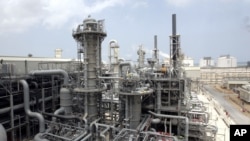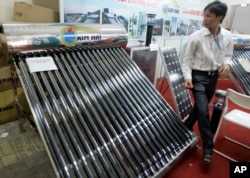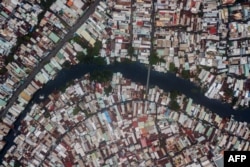Vietnam repeatedly calls itself one of the countries that would be most devastated if climate change worsens, but it is also preparing to import liquefied natural gas (LNG), which emits the greenhouse gases that accelerate climate change.
Rather than drastically boost renewable energy, Vietnam plans to start using LNG for the first time in 2020, a decision that highlights how hard it is for countries to balance energy costs with environmental protection.
While emissions resulting from LNG extraction, production and use are low compared to other fossil fuels, its increasing usage means it will be the biggest source of carbon emission growth by 2025 according to the energy consultancy Woods Mackenzie.
Le Van Luc at the Ministry of Industry and Trade explains that, as the economy grows quickly, domestic energy supplies can not keep up with the need for more electricity.
“You could see that for Vietnam, our country used to produce and export energy for many years,” said Luc, deputy director of electricity and renewable energy at the ministry. “However, in 2015, we became a net energy importer, especially of coal and natural gas.”
The communist country of 100 million people is not alone.
Other United Nations members gathering for climate talks in Poland this week face similar challenges, from the yellow vest protesters in France angered by fuel price hikes, to the U.S. officials trying to convince U.N. colleagues in side events that coal can be clean.
Elsewhere in Southeast Asia, as well, peers like Indonesia and Thailand intend to burn ever more coal, despite also fearing the threat of climate change.
For Vietnam, LNG is making its debut in part because policymakers believe there are limits to renewable energy. Luc said that the country is reaching the upper limit of the hydro power it can get from dams, and that natural gas is a bit more affordable than wind or solar power.
LNG is also being discussed because the United States wants to promote it here, which would allow American companies to export more of the fossil fuel. The U.S. government organized a natural gas conference last week, when Mary Tarnowka, the U.S. consul general in Ho Chi Minh City, warned of energy shortages to come in southern Vietnam. She noted the city she currently calls home has annual economic growth of 10 percent.
“All of this is creating a growing middle class, and a society and culture that is growing as quickly as their energy demands,” she said in a speech. “With the rising demand for energy approaching a growth rate of 8 percent in 2018, Vietnam is currently facing significant challenges in the southern provinces in order to keep pace.”
Natural gas is typically transported through pipelines, but for longer distances, it must be cooled down to a liquid state, so that it can be shipped in containers. That would allow it to travel from the United States, across the Pacific to Vietnam.
Once it arrives, though, there has to be infrastructure to receive the LNG and warm it back into a gaseous state that can be used for fuel. That is where U.S. companies and agencies are coming in to advise on construction.
“The difficulty and challenge for Vietnam is that we have yet to have any experience in constructing or operating LNG infrastructure,” Luc said.
He added that the country is still investing in electricity generated from the wind and the sun. But fossil fuels are needed as a buffer, Luc said, for when the wind is not blowing and the sun is not shining.
Some investors say Vietnam pays too low a tariff to make renewables viable, but others are already making a profit from solar power and say firms need to accept the price rather than hope for it to change.
Environmental economist Le Viet Phu said Vietnam needs a diverse energy mix. The country is not going to abandon coal, but using more natural gas will be less polluting than coal, and alternative energy is on the rise, he said.
“Renewables are good for shedding peak loads, but renewables are not cheap,” said Phu, of Fulbright University Vietnam. “We have seen renewables picking up speed recently, but it will be years until we see some significant impact on the system.”
And activists are not giving up on alternative energy, including biomass, which refers to plants that can be burned as fuel.
“Ho Chi Minh City and the Mekong Delta are the areas with the largest potential in the country for renewable energy development projects,” environmental group CHANGE wrote on its blog, “especially solar and biomass, with many hours of sunshine, a long sunny season, and abundant agricultural by-products, such as straw, rice bran, and rice husks.”













